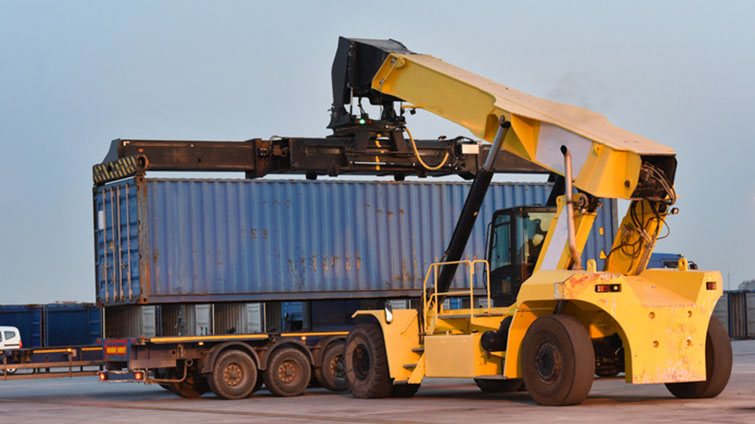Delays persist at ports of New York and Manzanillo

United States
Major chassis providers prepared for tariff-related import volume increases in June and July by expanding and strategically repositioning equipment. TRAC Intermodal, Direct ChassisLink Inc. (DCLI), and FlexiVan began unstacking idle equipment in June, conducting inspections, and moving chassis to key inland hubs including Chicago, Dallas, and Memphis to prevent equipment shortages.
Despite these preparations, operational challenges persist at wheeled rail facilities where steamship line rules continue limiting carrier flexibility, particularly in the Chicago and Kansas City markets. Private chassis fleet adoption by trucking companies is expected to accelerate, reducing reliance on shared chassis pools and improving supply chain resilience.
West Coast
While official statistics haven’t been released, the Ports of Los Angeles and Long Beach were busier in June thanks to importers trying to take advantage of a 90-day window of lower U.S. tariffs on imports. For goods from most countries, that window has been extended from July 9 to August 1. For Chinese imports, the window is scheduled to close August 12.
Volumes are expected to continue to increase in July, but with throughput below capacity limits, terminals are positioned to handle volume increases without service degradation. Container dwell time remains well below historical averages; drayage operations show rapid truck turn times, and rail connectivity shows minimal delays.
Chassis availability remains strong across Los Angeles, Long Beach, and Oakland, but could tighten—particularly for inland-bound cargo requiring intermodal connections. Drayage capacity may face constraints as drivers and equipment are concentrated on high-priority tariff-sensitive cargo, potentially creating delays for non-urgent shipments.
Equipment repositioning challenges may emerge as carriers adjust vessel deployments and sailing frequencies. The availability of empty containers for exports remains constrained as carriers prioritize profitable Asia-bound rotations, though West Coast ports are maintaining better supply compared to Gulf Coast terminals.
Gulf Coast
U.S. exporters face severe container shortages as reduced Asia-U.S. import volumes limit availability for outbound cargo. The export market remains heavily dependent on inbound Asian cargo flows for positioning, creating persistent imbalances.
Shortages are particularly acute at Gulf Coast ports and inland rail ramps, where reduced import dwell times and lower vessel call frequencies have disrupted traditional cycling patterns. Agricultural and manufacturing exporters report extended detention periods and increased repositioning costs.
Imbalances will persist until import volumes recover and sailing schedules adjust following the delayed implementation of higher U.S. reciprocal tariffs in August. Carriers are prioritizing equipment for profitable Asia-to-U.S. routes, leaving exporters competing for limited units.
New York
Port congestion extends beyond marine terminals, with rail service into New York experiencing delays of up to one week. These delays are expected to persist through August as terminal throughput remains constrained. Intermodal services face particular constraints, as chassis shortages compound the congestion.
Peak season volumes will likely intensify equipment imbalances, potentially adding three to five days to normal transit times for cargo moving beyond the New York metropolitan area. Rail challenges create cascading effects, extending lead time requirements for U.S. East Coast exports.
Shippers should factor substantial buffer time into delivery schedules and consider alternative East Coast gateways including Norfolk, Savannah, or Charleston to mitigate delays.
Central/Ohio Valley
Effective July 7, Norfolk Southern Railway increased daily storage fees while making terminal improvements. Changes include expanded stacking operations in Austell (Atlanta) and Rossville (Memphis), plus an improved gate reservation system for better flow management.
These infrastructure investments position Norfolk Southern to handle volume surges more effectively, but higher storage costs will disproportionately impact detention-sensitive cargo and tight delivery windows. Advanced planning will be essential to manage charges.
Starting July 1, Houston port implemented excessive import dwell fees for refrigerated containers that haven’t been picked up after the standard free time. These are applicable even during scheduled terminal closures. With typical refrigerated container free time limited to two calendar days, cargo arriving Thursday and Friday faces particular risk of fees accumulating over the weekend.
Mexico
Port of Manzanillo updates
The Port of Manzanillo continues to experience difficult conditions. Persistent delays in customs clearance and road congestion have significantly impacted cargo flow. In response, port authorities have implemented measures such as extended customs hours and additional staffing.
Despite these efforts, delays continue to be reported. The onset of hurricane season adds further risk to port operations. To mitigate the effects of these disruptions, we recommend you consider advancing your bookings by at least three to four weeks and explore alternative ports, such as the Port of Lázaro Cárdenas.
For more Mexico insights, see the North American Cross-Border section of this report.